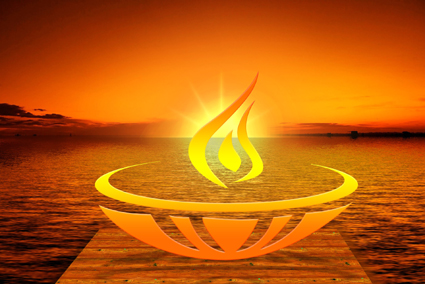BIG FOOD AND DRUG DONATE TO CANCER RESEARCH (ISSUE 148) SEPTEMBER 30, 2014
By Diane Gold
BIG FOOD AND DRUG DONATIONS
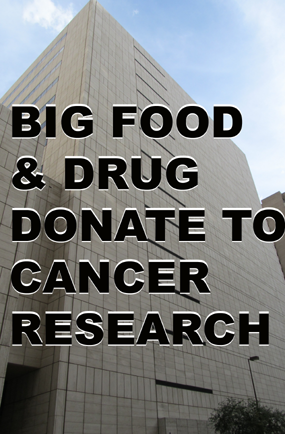 It’s no surprise that big food and drug donations to cancer research are common. In fact, it might be fair to say that a hefty chunk of annual fundraising revenue comes from this. Why? Well, think about this. If I give you a million dollars a year to live because I believe in your cause, you will be careful not to enrage me, if you want me to continue giving you a million dollars. In the same way, big food gives money to organizations who, in turn, go out of their way not to anger their donors.
It’s no surprise that big food and drug donations to cancer research are common. In fact, it might be fair to say that a hefty chunk of annual fundraising revenue comes from this. Why? Well, think about this. If I give you a million dollars a year to live because I believe in your cause, you will be careful not to enrage me, if you want me to continue giving you a million dollars. In the same way, big food gives money to organizations who, in turn, go out of their way not to anger their donors.
This means that organizations who are the recipients of Big Food and Big Drug donations go out of their way not to speak poorly about the bad nutrition in that very company’s product or any new studies that might shed negative light on Big Food or Big Drug for fear of losing a donation. So these so-called advocates for a specific disease are in bondage and cannot advocate and get their funding.
HONESTY FOR HEALTH
Most of us know at this point that anyone in business who wants to stay in business is going to have a hard decision to make if she finds bad in her business. If I discover my food product is causing tired blood or fat in the arteries, I have 2 choices: be ethical and tell everyone and work on fixing my product or tell no one so that I don’t lose my house, my car, my plane and my power.
Because we never know when a food is going to be found to be medically harmful and we never know who is withholding information, we have to know we are responsible for vetting our food. The industry is responsible, in its eyes, for making money and not getting sued, not keeping us as safe and healthy as possible.
Bruce Bradley, food advocate and author, in an interview known as Confessions Of A Former Big Food Executive, says,
“Think critically. Most claims and advertising by Big Food companies are meant to manipulate you, not educate you. Read your labels and do your research.”
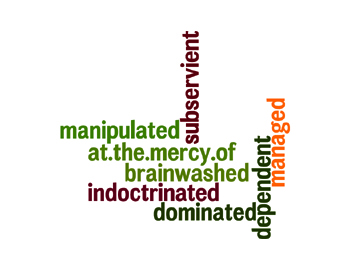 Having done food and label research since 1971, I know this to be true. We are at the mercy of companies that do not disclose scientific truth about their ingredients so that they can manipulate people into thinking the ingredient is harmless. They don’t label carcinogens, animal products, what’s in the natural or genetically modified products YET. Most of us are too busy to research these things themselves so depend upon transparency which is not.
Having done food and label research since 1971, I know this to be true. We are at the mercy of companies that do not disclose scientific truth about their ingredients so that they can manipulate people into thinking the ingredient is harmless. They don’t label carcinogens, animal products, what’s in the natural or genetically modified products YET. Most of us are too busy to research these things themselves so depend upon transparency which is not.
PINKWASHING AND THE BREAST CANCER AWARENESS CAMPAIGN
We all know the expression greenwashing. I’ve even seen it professionally in consulting for energy efficient lighting. It means everybody is using the word green to entice people to consume.
In the cancer space, there is pinkwashing. That means people are being blinded by the fact that a company produces something pink and connects to a breast cancer walk, march, DVD, pair of scissors, razor, dish, tennis ball. The connections I have just mentioned seem harmless enough. There are more, some whose parent companies produce food that is known to promote cancer.
Do we realize that the pink branding and donating to the cause may have nothing to do with health, especially when meat and dairy industries’ basic foods are known to cause vulnerabilities to cancer, chronic disease, environmental pollution through agricultural livestock?
We see a nice beautiful pink color on a pen with a breast cancer symbol, or a tennis ball. These items are not food, so there must be no evil in this. Unless the company that makes the pen is, in some way, connected to a food giant or other company that uses carcinogens or toxins.
DONOR RELATIONSHIPS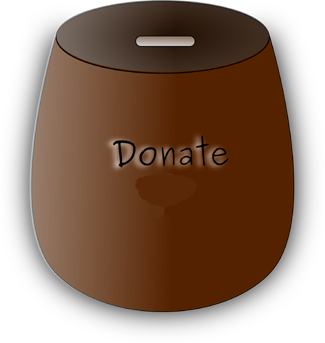
Here’s a good way to see the relationship between donations and future profits, reported by Samuel Epstein, M.D., in his report as Chairman, The Cancer Prevention Coalition, U Illinois, School of Public Health. One of the large pharmaceutical companies has made multi-million-dollar donations to the richest cancer society we have.
For its first 10 years, one of its divisions was a major producer of pesticides, known to cause cancer. Of course, the cancer society did not report this. The same drug company also makes the top breast cancer drug. Because it wants the cancer society to recommend it to its constituents, the drug company continues to donate, and the society continues to recommend the drug.
The same drug company also owns a bunch of cancer centers. Since it has given money to the society, the society recommends these centers. The millions of dollars in donations from the drug company gets the drug company hundreds of millions of dollars in return. And the society keeps getting its funding. These facts show monumental conflicts of interest, which would be happy capitalism (which I support) if it weren’t doing harm. Unfortunately, the society does not talk about nutrition as cancer preventer. The reason for this is obvious: the society does not want to speak out in any way that could jeopardize donations.
PERPETUATING THE PROBLEM
During October, Breast Cancer Awareness Month, we see pink cheese food products, carcinogenic, artificially colored and flavored beverages, pink baked goods companies, gmo breakfast cereal companies (which most breakfast cereals are) that are donating to the breast cancer cause. This would be wonderful if the manufacturers of these foods would, for that 1 month, remove any ingredient that was known to be or was suspected of causing the problem in the first place.
It’s no secret that a large fried chicken company donates to a breast cancer campaign. The former executive director of Breast Cancer Action said,
“They are raising money for women’s health by selling a product that’s bad for your health…it’s hypocrisy.”
THE RESEARCH
It will come as no surprise that the “research” that is done through our hard earned donated dollars and the dollars that come from the Big Food and Drug corporations very much support research to create the next best pill, rather than research on nutrition that may prevent a disease from happening at the root level from the food we eat. This is not to say that we don’t need research for pharmaceuticals. It does say that, at least, as much money, if not more research needs to be funneled to see how we can prevent or cure our ills through nutrition.
T. Colin Campbell says, in his book, Whole,
“Rather than preventing cancer, the NIH’s (National Institute Of Health) approach actually serves as a psychological inoculation against true health. There’s no need to change your diet. You can if you want. But it’s much easier and cheaper to take a pill. And, don’t worry, we’ve practically solved the problem by identifying the liver cancer gene. Just give us a few more years, and we’ll have a cure.”
In this statement, Dr. Campbell is talking about the mega industries’ working together with governmental agencies and popular disease organizations that interact with the public and the patients. These organizations often send their donations straight to pharmaceutical companies and leave out nutrition research which he and I believe to be where the research needs to be.
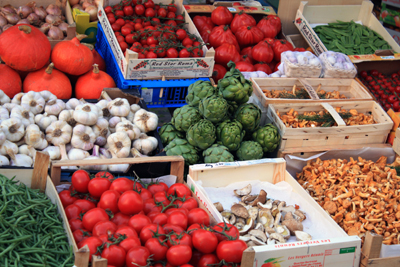 Why is nutrition research left out of grant allocations? Follow the money. There is no way to make money if a company discovers that turmeric can alleviate cancer. There is no way a pharmaceutical company can make a drug from maca root. So the study money goes to the companies who gratefully take it in to research mechanisms that can outcome a hugely profitable product.
Why is nutrition research left out of grant allocations? Follow the money. There is no way to make money if a company discovers that turmeric can alleviate cancer. There is no way a pharmaceutical company can make a drug from maca root. So the study money goes to the companies who gratefully take it in to research mechanisms that can outcome a hugely profitable product.
Dr. Campbell also talks about the American Society for Nutrition and the Academy of Nutrition and Dietetics as providers of education, networking and leadership to professionals. He says,
“Their donations and PR, their awards and fundraisers just reinforce the system in which they are embedded, a system that lauds reductionist* research and ignores nutrition. The sad fact is that too many of these organizations are more likely to be found shilling for pharmaceutical companies and the food industry than advocating for patients or sharing scientific truths.”
*Reductionist refers to believing that studying 1 part of the body at a time gives the whole answer, rather than looking at how all systems work together in an integrative process.
CONCLUSION
Why do Big Food and Drug donate to cancer research and others and what’s problematic here?
As mentioned above, most people don’t have the time to study food. This coupled with the idea that food has never been taught in school on the level that is needed means that most of us are at the mercy of Big Food. This goes for Big Drug, also. We believe the commercials we have seen all our lives, even when we know they are created to sell rather than to give us knowledge. We believe our doctors about diet, even though most of them have never had but one single nutrition class in medical school.
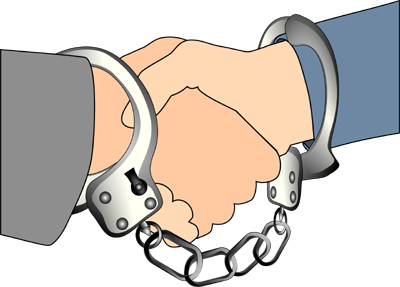 Most of all, we trust the organizations that hand out millions of dollars to research to have our best interest in mind. We don’t question that their hands are tied from speaking about the evidence against their donors. We don’t question why the research that meat and dairy cause cancer is not pursued heavily. We don’t question that so much research money goes to screening disease rather than to educating students and consumers to prevent disease in the first place through good nutrition. We look at organizations one at a time, so we don’t see that every powerful entity is donating money to push a power agendas.
Most of all, we trust the organizations that hand out millions of dollars to research to have our best interest in mind. We don’t question that their hands are tied from speaking about the evidence against their donors. We don’t question why the research that meat and dairy cause cancer is not pursued heavily. We don’t question that so much research money goes to screening disease rather than to educating students and consumers to prevent disease in the first place through good nutrition. We look at organizations one at a time, so we don’t see that every powerful entity is donating money to push a power agendas.
Each of us can make some effort on behalf of human health; we can all take a step to make our health matter to everyone, even more than money.
ACTION STEPS
Here are several simple action steps to effect change. It might be most practical to pick one and do it.
1) PICK ONE HEALTH CHARITY
Call them and ask them to point out their list of donors that are public. Notice which companies are involved. donations. Unfortunately, many donors remain anonymous. One might think that the call for anonymity would be because someone is humble and doesn’t want her name publicized. More often than not, anonymity protects association between donors and agendas they have just helped push.
2) CALL YOUR LOCAL PUBLIC SCHOOL SYSTEM
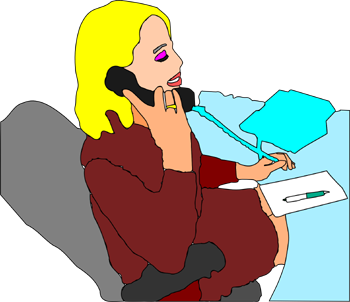
Find out what type of ongoing nutrition program they have for children starting in pre-K through high school. Encourage the school to speak with you about it and to enhance the program if it exists or install one, if it does not. If you don’t feel comfortable calling within your local district, call another one. There’s no harm in asking questions since they plant seeds.
3) CALL YOUR MOST LOCAL MEDICAL SCHOOL
Ask whether nutrition is in the curriculum, how many hours the courses are. If there is 1 course or less, urge them to make 1 course per semester the standard during all 4 years of school.
4) ASK YOUR MOST LOCAL UNIVERSITY LIBRARIAN WHAT
RESEARCH TOOLS S/HE HAS
Sometimes, librarians have to be pushed to help. Don’t be afraid to do so.
5) GO TO FOUNDATIONCENTER.ORG AND SEE HOW MUCH
INFORMATION THERE IS ABOUT GRANTS
Most of their information is about foundations whose information is open to the public. They do have some information for free and much information for pay about the private sector.
6) WRITE TO YOUR REP OR PRESIDENT TO CREATE A DEPARTMENT OF TRANSPARENCY FOR FOOD, PHARMA STUDIES, DONATIONS AND RESEARCH

If you wish to share your story, please hit reply in your email program to be contacted.

FEEDBACK
We value your feedback very much.
Please leave a comment below.
Please LIKE us on the website and at
WarriorsOfWeight on Facebook.
You can also follow us on Twitter: @warriorsoweight.
Thanks.

DIANE GOLD, PUBLISHER AND AUTHOR
Diane Gold, Founder of Warriors of Weight, Turning Habits Into Health, is a mentor in tai chi, kung fu and meditation, a music, fitness and stress expert, dedicated mom, studying plant-based nutrition, peaceful conflict resolution and habit replacement.
She has been researching relationships among the powerful. Today she looks at Big Food and Big Drug and Cancer Research Donations.She says,
“It’s wonderful when someone donates to much needed research, whether the research is reductionist or holistic. It is not wonderful when the research concern omits information because of its dependence on its donor.
“What I’ve been finding in every power sector is that power giants give money to create cheer leading teams. And, again, this would be OK if recipients of money, the cheerleaders, were not keeping valuable information from the public as a result.
“We may not be taught about power relationships in school because a powerful company may be giving money to the school board, before college, and to the university endowment fund of the institution we attend after secondary school.
“We may not be taught about nutritional strategies to disease because there is so much money to be made after we get sick: from surgery, procedures involving medical machinery and prescription drug therapy.
“I am not maligning donations; or surgery, medical procedures and pharmaceuticals. Hail to them all. I am asking each of us to be aware that each power sector has an agenda to complete. With open eyes, we can see it and learn how it affects transparency.
“Finally, let us all take good care of ourselves because we are worth it, even if we don’t feel it!”

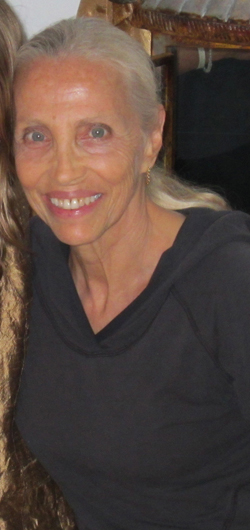 AT PEACE WITH DIANE GOLD INTERNET RADIO SHOW
AT PEACE WITH DIANE GOLD INTERNET RADIO SHOW![]()
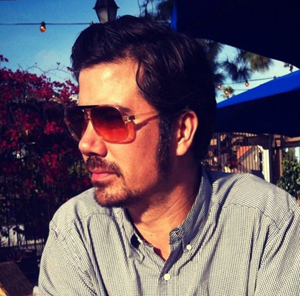

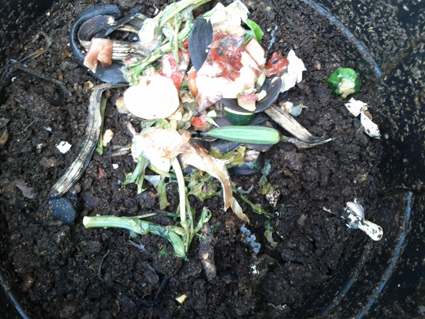 Composting, how and why discusses how easy it is for us to replenish the soil using our raw kitchen waste and why it benefits us to do it.
Composting, how and why discusses how easy it is for us to replenish the soil using our raw kitchen waste and why it benefits us to do it.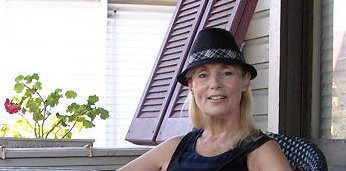
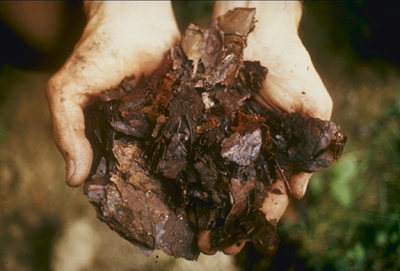
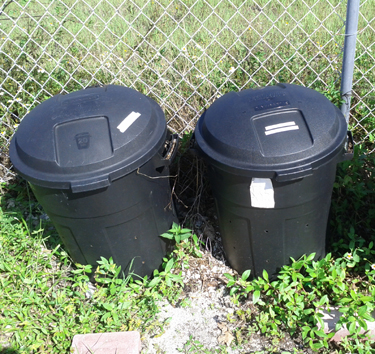
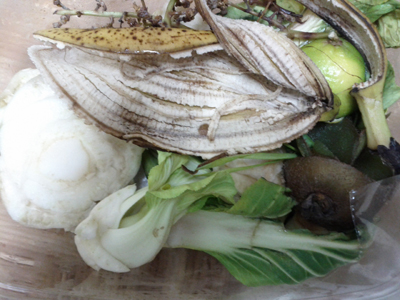
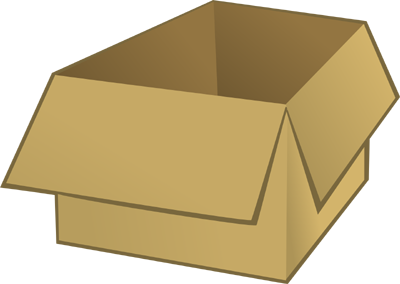
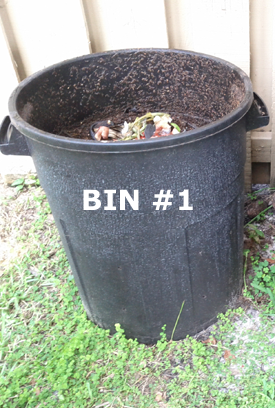
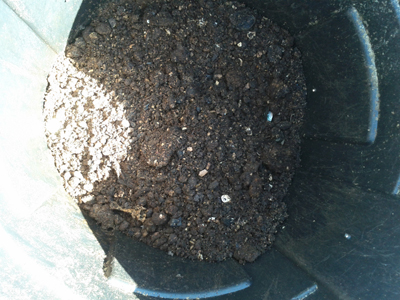
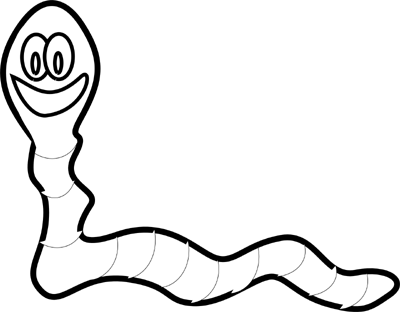
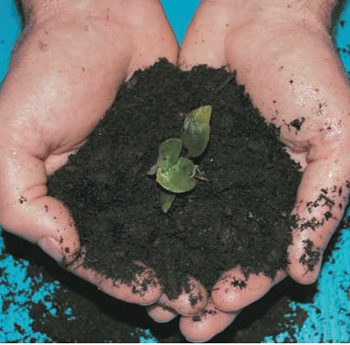
 It’s no surprise that big food and drug donations to cancer research are common. In fact, it might be fair to say that a hefty chunk of annual fundraising revenue comes from this. Why? Well, think about this. If I give you a million dollars a year to live because I believe in your cause, you will be careful not to enrage me, if you want me to continue giving you a million dollars. In the same way, big food gives money to organizations who, in turn, go out of their way not to anger their donors.
It’s no surprise that big food and drug donations to cancer research are common. In fact, it might be fair to say that a hefty chunk of annual fundraising revenue comes from this. Why? Well, think about this. If I give you a million dollars a year to live because I believe in your cause, you will be careful not to enrage me, if you want me to continue giving you a million dollars. In the same way, big food gives money to organizations who, in turn, go out of their way not to anger their donors. Having done food and label research since 1971, I know this to be true. We are at the mercy of companies that do not disclose scientific truth about their ingredients so that they can manipulate people into thinking the ingredient is harmless. They don’t label carcinogens, animal products, what’s in the natural or genetically modified products YET. Most of us are too busy to research these things themselves so depend upon transparency which is not.
Having done food and label research since 1971, I know this to be true. We are at the mercy of companies that do not disclose scientific truth about their ingredients so that they can manipulate people into thinking the ingredient is harmless. They don’t label carcinogens, animal products, what’s in the natural or genetically modified products YET. Most of us are too busy to research these things themselves so depend upon transparency which is not.
 Why is nutrition research left out of grant allocations? Follow the money. There is no way to make money if a company discovers that turmeric can alleviate cancer. There is no way a pharmaceutical company can make a drug from maca root. So the study money goes to the companies who gratefully take it in to research mechanisms that can outcome a hugely profitable product.
Why is nutrition research left out of grant allocations? Follow the money. There is no way to make money if a company discovers that turmeric can alleviate cancer. There is no way a pharmaceutical company can make a drug from maca root. So the study money goes to the companies who gratefully take it in to research mechanisms that can outcome a hugely profitable product. Most of all, we trust the organizations that hand out millions of dollars to research to have our best interest in mind. We don’t question that their hands are tied from speaking about the evidence against their donors. We don’t question why the research that meat and dairy cause cancer is not pursued heavily. We don’t question that so much research money goes to screening disease rather than to educating students and consumers to prevent disease in the first place through good nutrition. We look at organizations one at a time, so we don’t see that every powerful entity is donating money to push a power agendas.
Most of all, we trust the organizations that hand out millions of dollars to research to have our best interest in mind. We don’t question that their hands are tied from speaking about the evidence against their donors. We don’t question why the research that meat and dairy cause cancer is not pursued heavily. We don’t question that so much research money goes to screening disease rather than to educating students and consumers to prevent disease in the first place through good nutrition. We look at organizations one at a time, so we don’t see that every powerful entity is donating money to push a power agendas.
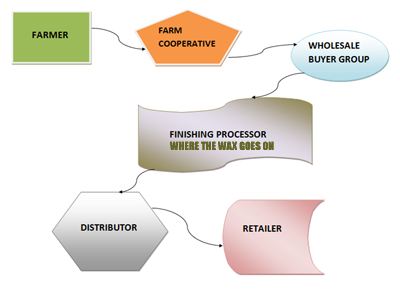 What’s on your produce is a huge question for many of us, especially if we are brought up believing what we see on our fruits and vegetables. For those of us who know full well that we are eating pesticides and wax, there are still surprises. For many, we are not aware of any of the standard ways the fruit and vegetable supply chain works. We are also confused about why organic food matters and what all this talk has to do with our health.
What’s on your produce is a huge question for many of us, especially if we are brought up believing what we see on our fruits and vegetables. For those of us who know full well that we are eating pesticides and wax, there are still surprises. For many, we are not aware of any of the standard ways the fruit and vegetable supply chain works. We are also confused about why organic food matters and what all this talk has to do with our health.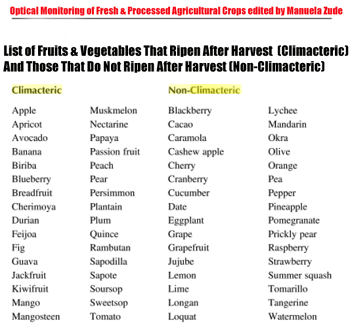 Fruits and vegetables produce a ripening hormone called ethylene. Plants are categorized into two categories: those that ripen after harvest (climacteric species), such as avocados or peaches, and those that do not like oranges or spinach (non-climacteric plants). The ripening process produces a hormone called ethylene, commonly known, not surprisingly, as the ripening hormone. All plants off-gas this substance, but some (the climacteric plants) produce more.
Fruits and vegetables produce a ripening hormone called ethylene. Plants are categorized into two categories: those that ripen after harvest (climacteric species), such as avocados or peaches, and those that do not like oranges or spinach (non-climacteric plants). The ripening process produces a hormone called ethylene, commonly known, not surprisingly, as the ripening hormone. All plants off-gas this substance, but some (the climacteric plants) produce more.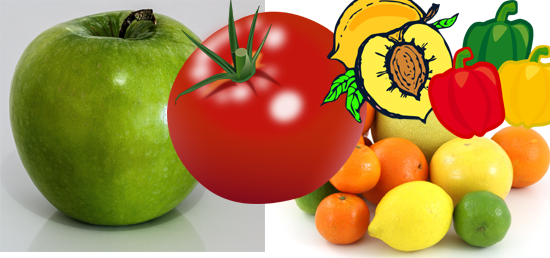 So, when a fruit or vegetable is harvested, it goes through a cycle of maturation, or ripening, and then begins senescence, which is its final stage of life. We might wonder about this wax and its safety, but we should be aware that it exists.
So, when a fruit or vegetable is harvested, it goes through a cycle of maturation, or ripening, and then begins senescence, which is its final stage of life. We might wonder about this wax and its safety, but we should be aware that it exists.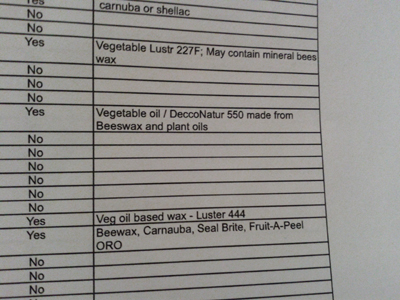
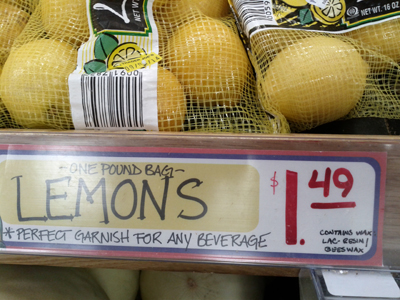
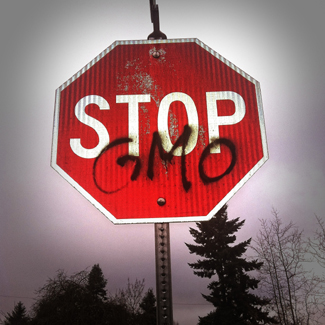
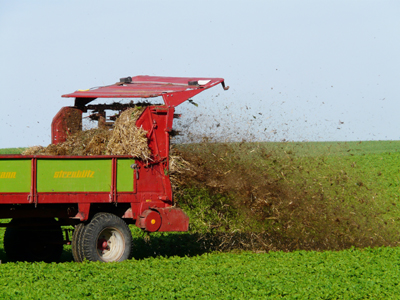 So, there are toxic chemicals being off-gassed from the fertilizer industry which is used on fruits and vegetables that don’t call themselves organic. There’s lots of methane from using cow waste in the soil and from cow waste that sits stagnantly.
So, there are toxic chemicals being off-gassed from the fertilizer industry which is used on fruits and vegetables that don’t call themselves organic. There’s lots of methane from using cow waste in the soil and from cow waste that sits stagnantly.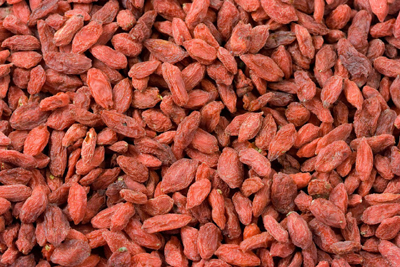 To find out what’s on my produce and your produce is very much a maze. If we are not professional growers, we don’t actually know about many of the items mentioned above. To find out the information is usually no one’s job but our own.
To find out what’s on my produce and your produce is very much a maze. If we are not professional growers, we don’t actually know about many of the items mentioned above. To find out the information is usually no one’s job but our own. If you buy at a local large store, go to the produce department and ask what kind of wax is on your favorite fruits and vegetables. Be persistent since the grocer, most likely, will not know and will say she has no way to find out that information. To cut the process down for you, get the phone number to the store’s regional warehouse. There, ask for the produce buyer. This will start the process of someone’s doing some research for you.
If you buy at a local large store, go to the produce department and ask what kind of wax is on your favorite fruits and vegetables. Be persistent since the grocer, most likely, will not know and will say she has no way to find out that information. To cut the process down for you, get the phone number to the store’s regional warehouse. There, ask for the produce buyer. This will start the process of someone’s doing some research for you.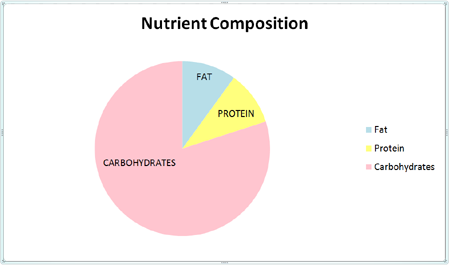 Nutrient composition, as per T. Colin Campbell, is far more important than looking at the amount of one nutrient quantity alone. The amount of calories we ingest is not as important as what type of calorie we take in.
Nutrient composition, as per T. Colin Campbell, is far more important than looking at the amount of one nutrient quantity alone. The amount of calories we ingest is not as important as what type of calorie we take in.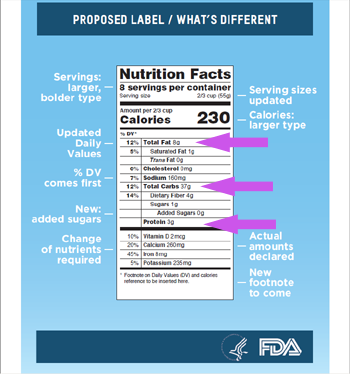
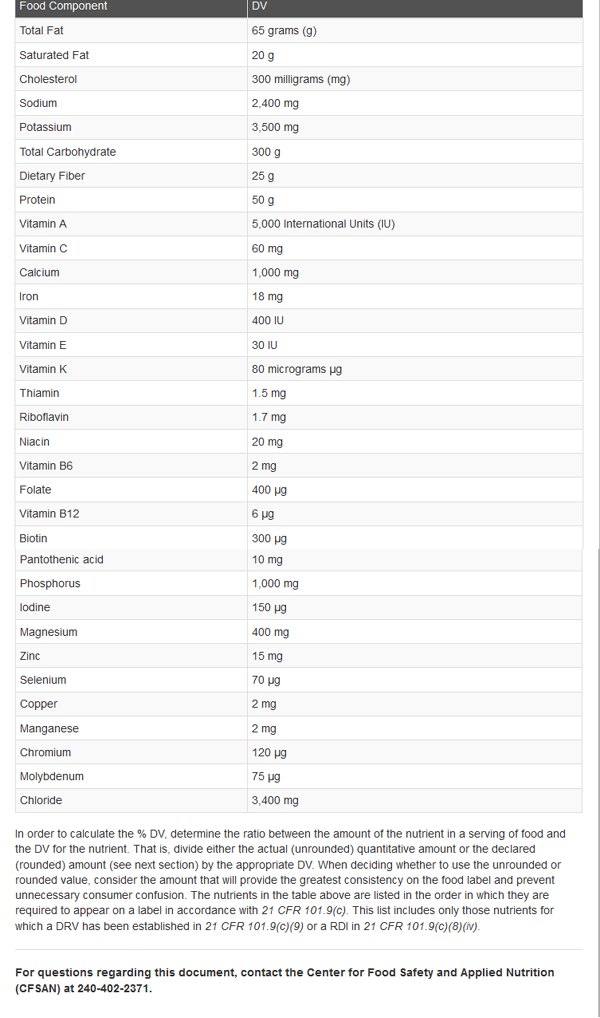
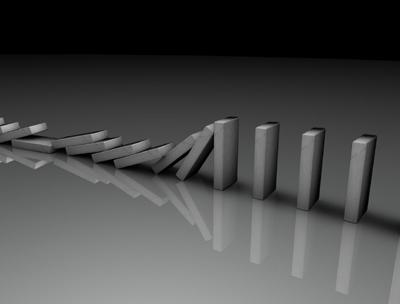 The following factors can change the amount of a macronutrient (like a carb), a micronutrient (like vitamin A), a macromineral (like calcium), a micromineral (like copper), a phytochemical (like quercetin) that we need on a particular day. When just 1 change occurs in our lives, the body goes through the domino effect, where every system’s connection to every other system in the grand infrastructure we call the human body is affected.
The following factors can change the amount of a macronutrient (like a carb), a micronutrient (like vitamin A), a macromineral (like calcium), a micromineral (like copper), a phytochemical (like quercetin) that we need on a particular day. When just 1 change occurs in our lives, the body goes through the domino effect, where every system’s connection to every other system in the grand infrastructure we call the human body is affected.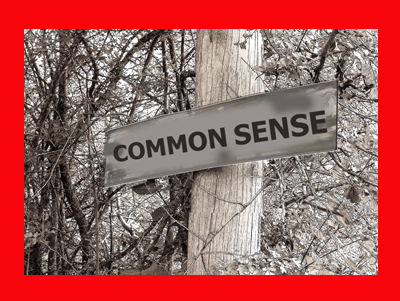
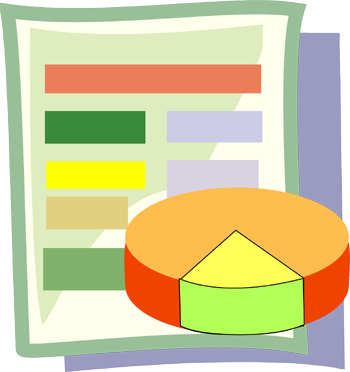
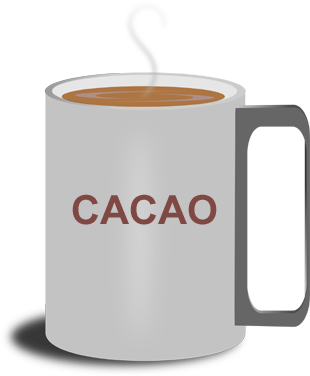 Cacao can improve your health in, oh, so many ways. Because of its positive effects, it has been used as a drink since between 1100 and 1400 B.C.E., according to a pottery residue discovery at Puerto Escondido in Honduras, written up in Fall, 2001, by Cornell U. Anthropologist John S. Henderson and UC-Berkeley Professor, Rosemary A. Joyce,
Cacao can improve your health in, oh, so many ways. Because of its positive effects, it has been used as a drink since between 1100 and 1400 B.C.E., according to a pottery residue discovery at Puerto Escondido in Honduras, written up in Fall, 2001, by Cornell U. Anthropologist John S. Henderson and UC-Berkeley Professor, Rosemary A. Joyce,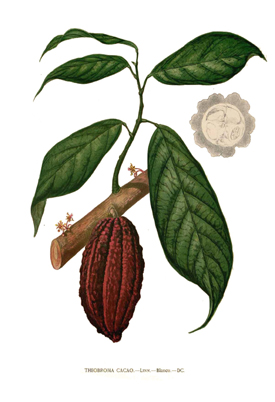 Magnesium balances brain chemistry, builds strong bones and helps normalize heartbeat and blood pressure. According to the nutritional facts of Sunfood’s cacao powder product, which I use every day, 1 tablespoon of certified organic cacao powder has 17.5% of our daily magnesium recommended intake (17.5% would be 56 mg for an adult older woman, which only fluctuates a little for younger adult women and is about 25% higher for men).
Magnesium balances brain chemistry, builds strong bones and helps normalize heartbeat and blood pressure. According to the nutritional facts of Sunfood’s cacao powder product, which I use every day, 1 tablespoon of certified organic cacao powder has 17.5% of our daily magnesium recommended intake (17.5% would be 56 mg for an adult older woman, which only fluctuates a little for younger adult women and is about 25% higher for men).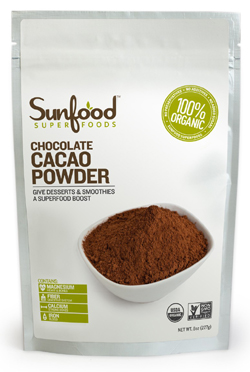
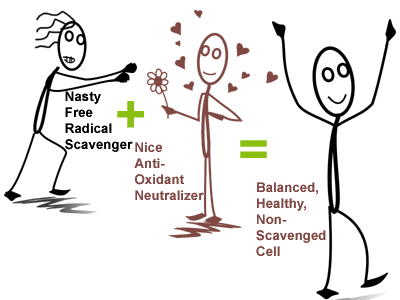
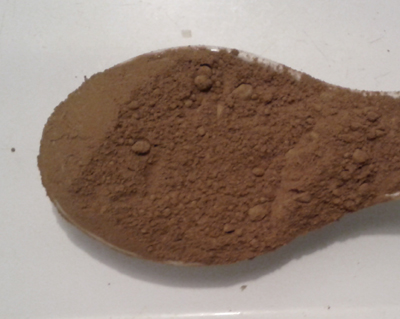 The smell of organic cacao powder is wonderful, only topped by organic maca powder. I think it’s pretty incredible that the most amazing smelling plants I have encountered so far has history together. The people on the bottom of the Andes Mountains (in the Tierra Caliente, mountain zone 1) used to trade with the people at the near top of the Andes (in the Tierra Fria Zone): cacao for maca and maca for cacao. (This is called vertical trading which provides for all 4 Andean mountain zones.)
The smell of organic cacao powder is wonderful, only topped by organic maca powder. I think it’s pretty incredible that the most amazing smelling plants I have encountered so far has history together. The people on the bottom of the Andes Mountains (in the Tierra Caliente, mountain zone 1) used to trade with the people at the near top of the Andes (in the Tierra Fria Zone): cacao for maca and maca for cacao. (This is called vertical trading which provides for all 4 Andean mountain zones.)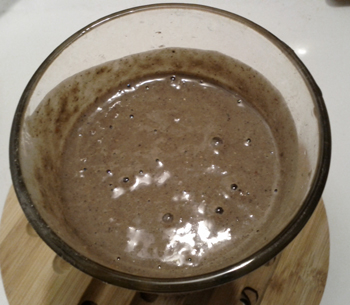 Who knew about cacao? It’s taken me almost 65 years to make cacao part of my daily routine. Until now, I have not really known how spectacular it is for me. It can have caffeine content (which is, at least, 1/20th as much as a cup of coffee) that does not affect me (or others) the way it does in coffee or tea.
Who knew about cacao? It’s taken me almost 65 years to make cacao part of my daily routine. Until now, I have not really known how spectacular it is for me. It can have caffeine content (which is, at least, 1/20th as much as a cup of coffee) that does not affect me (or others) the way it does in coffee or tea.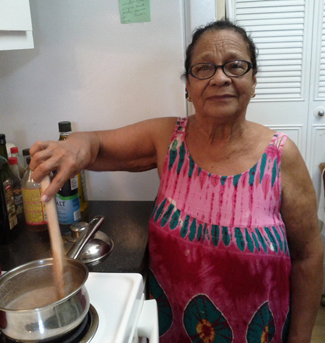
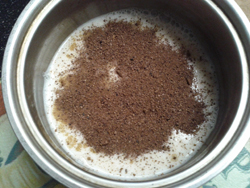
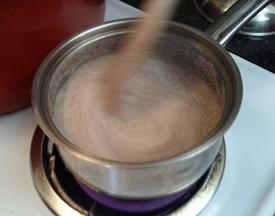
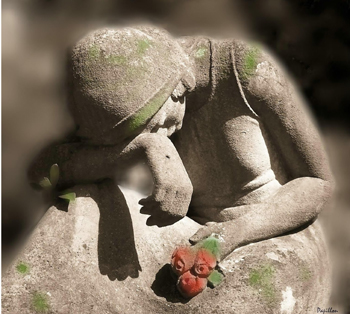 Recognizing 9 early warning signs of depression may sound like a thoughtless, insensitive question, uttered by someone who does not understand or is not experiencing depression. Let’s just say immediately that it takes extreme courage and focus to see ourselves, in general, and to see what is happening to us, in specific, while it is happening.
Recognizing 9 early warning signs of depression may sound like a thoughtless, insensitive question, uttered by someone who does not understand or is not experiencing depression. Let’s just say immediately that it takes extreme courage and focus to see ourselves, in general, and to see what is happening to us, in specific, while it is happening.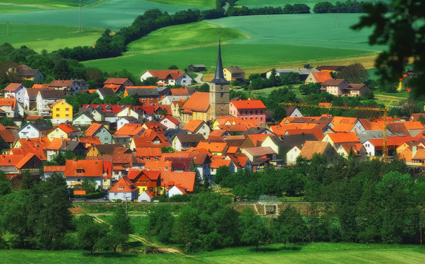 When we are in a depression, we are not looking at it because we are busy experiencing it. We can think of living in a valley (a depression in the land) in much the same way. We are not looking at our lives from the perspective of mountain dwellers since we don’t live in the upland. Our perspective is from the point where we are, living in the lowlands, the valley.
When we are in a depression, we are not looking at it because we are busy experiencing it. We can think of living in a valley (a depression in the land) in much the same way. We are not looking at our lives from the perspective of mountain dwellers since we don’t live in the upland. Our perspective is from the point where we are, living in the lowlands, the valley.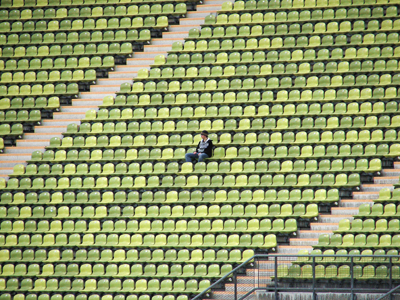 Little by little, we might see that we are spending more time at home, missing a little work here and there, having difficulty getting dressed to go out to socialize, going to lonely places. As with all actions, when we repeat them, they become more comfortable to do again. Kind of like tying a shoe or brushing our teeth.
Little by little, we might see that we are spending more time at home, missing a little work here and there, having difficulty getting dressed to go out to socialize, going to lonely places. As with all actions, when we repeat them, they become more comfortable to do again. Kind of like tying a shoe or brushing our teeth.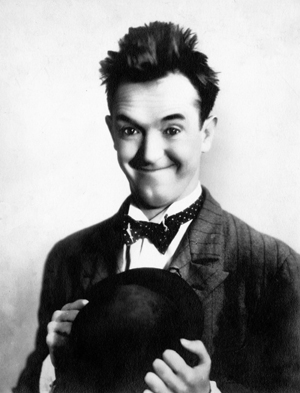 We may be comedians, making everybody laugh – which increases the lifespan of every laugher, and still be sad. It is, after all a great burden, to be the one commissioned to make everyone laugh. Much like the model or the beautiful actor is expected to be as perfect on camera as off, in case a photo is snapped at an off hour; so the comedian is expected to have a 24/7 smile. We may be parents with kids who sometimes hide our feelings so that we don’t burden the family with our doom.
We may be comedians, making everybody laugh – which increases the lifespan of every laugher, and still be sad. It is, after all a great burden, to be the one commissioned to make everyone laugh. Much like the model or the beautiful actor is expected to be as perfect on camera as off, in case a photo is snapped at an off hour; so the comedian is expected to have a 24/7 smile. We may be parents with kids who sometimes hide our feelings so that we don’t burden the family with our doom.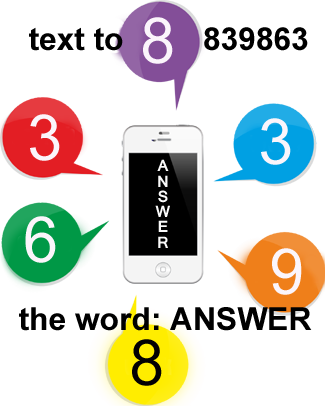
 Think of a one-inch square made up of 72 red squares, kind of like a crossword puzzle. And every day, for the next 72 days, one of those red squares turns light red. All of a sudden, in 72 days, the entire square is light red, and we may not have noticed it. That’s the subtle change.
Think of a one-inch square made up of 72 red squares, kind of like a crossword puzzle. And every day, for the next 72 days, one of those red squares turns light red. All of a sudden, in 72 days, the entire square is light red, and we may not have noticed it. That’s the subtle change.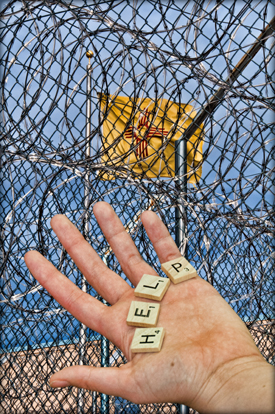 Since most of us will not reach out when we are in dire straits, because we are too depressed to do so, decide to be on the lookout on behalf of others. All of us have the responsibility.
Since most of us will not reach out when we are in dire straits, because we are too depressed to do so, decide to be on the lookout on behalf of others. All of us have the responsibility. 4) RUN TO THE LOCAL STORE OR CAFE TO HAVE HUMAN CONTACT
4) RUN TO THE LOCAL STORE OR CAFE TO HAVE HUMAN CONTACT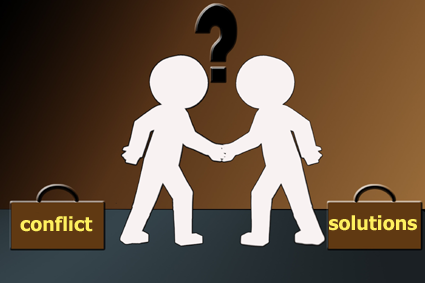 Our habit of war is based upon our upbringing. We learn to stand up for ourselves, but we are not always groomed in the world of tolerance and forgiveness. We are taught that courage means fighting for our place, rather than showing that changing someone’s mind through talk is far braver.
Our habit of war is based upon our upbringing. We learn to stand up for ourselves, but we are not always groomed in the world of tolerance and forgiveness. We are taught that courage means fighting for our place, rather than showing that changing someone’s mind through talk is far braver.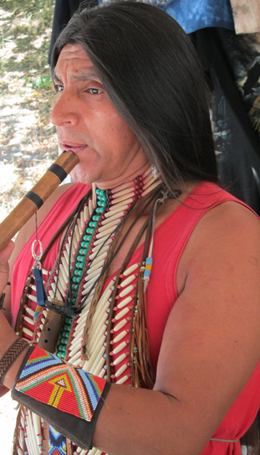 An example of successful use of pride can be seen in the first people in the United States, American Indians, whose connotation “Native Americans” currently includes Alaskan Natives, Native Hawaiians and American Samoans. In order for these groups to live in peace on land that was acquired by their ancestors, they had to participate willingly in a process of cooperation, compromise and huge sacrifice. They chose to be proud of their heritage at the same time as they agreed to give some land to get security, restitution and to live in peace. (When I say successful pride, I use the word “success” to mean making the best of a not so good situation.
An example of successful use of pride can be seen in the first people in the United States, American Indians, whose connotation “Native Americans” currently includes Alaskan Natives, Native Hawaiians and American Samoans. In order for these groups to live in peace on land that was acquired by their ancestors, they had to participate willingly in a process of cooperation, compromise and huge sacrifice. They chose to be proud of their heritage at the same time as they agreed to give some land to get security, restitution and to live in peace. (When I say successful pride, I use the word “success” to mean making the best of a not so good situation.
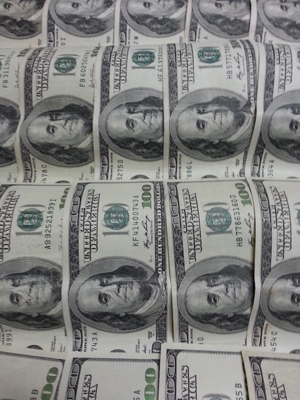
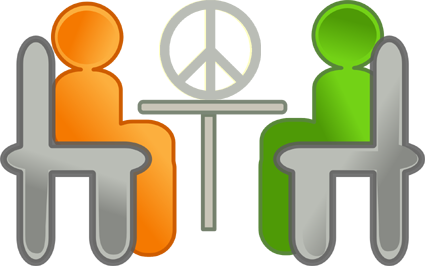 There would be 3 sets of peace conferences: the first, with representatives at the Secretary of State level. If no agreement were reached here, the second conference would include military commanders at a high level. If no agreement were reached through conference with these individuals, the third conference would include the second in command of the respective territory/country.
There would be 3 sets of peace conferences: the first, with representatives at the Secretary of State level. If no agreement were reached here, the second conference would include military commanders at a high level. If no agreement were reached through conference with these individuals, the third conference would include the second in command of the respective territory/country. A definition for this discipline that mirrors mine is this, given by Deepak Chopra, M.D., speaker and author,
A definition for this discipline that mirrors mine is this, given by Deepak Chopra, M.D., speaker and author,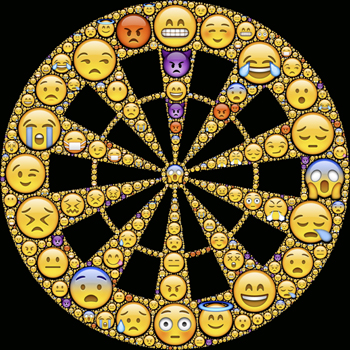 All throughout the day, each of us has so many stimuli: noises, smells, people, electronics, world events, our own creative projects and work, our family and friends. As we walk to our car, bike, train, we see all the different parts of each person that may draw our attention.
All throughout the day, each of us has so many stimuli: noises, smells, people, electronics, world events, our own creative projects and work, our family and friends. As we walk to our car, bike, train, we see all the different parts of each person that may draw our attention.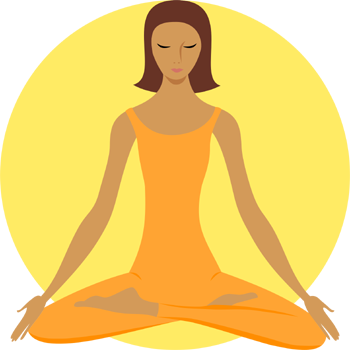
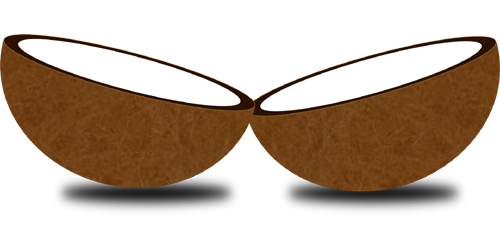
 When we do tai chi, free dance, body shaking; we’re so absorbed in the body movement that it’s hard to lose our focus since we would we would lose our physical balance if our attention strayed. That’s why it is massively easier to rule out external stimuli when we’re physically moving.
When we do tai chi, free dance, body shaking; we’re so absorbed in the body movement that it’s hard to lose our focus since we would we would lose our physical balance if our attention strayed. That’s why it is massively easier to rule out external stimuli when we’re physically moving.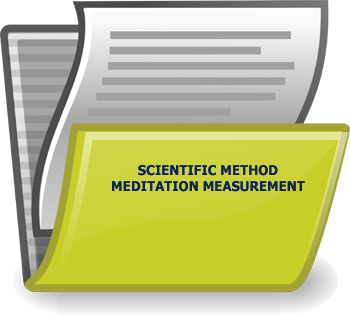 Medical research studies have confirmed that meditation reduces blood pressure, anxiety, PTSD, cholesterol, depression, stress. In April, 2014, a team at Brown University finally structured the coding of verbal responses that can be correlated to quantitative neurophysiological measurements.
Medical research studies have confirmed that meditation reduces blood pressure, anxiety, PTSD, cholesterol, depression, stress. In April, 2014, a team at Brown University finally structured the coding of verbal responses that can be correlated to quantitative neurophysiological measurements.